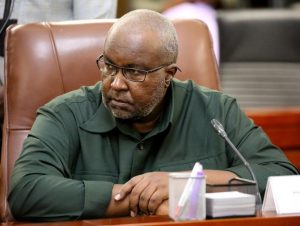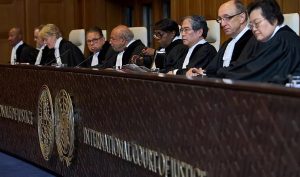Unpredictable school fees bar many children in Africa from an education
4 min readIn Uganda, millions of children are kept out of school due to financial pressures, with school fees being the primary barrier to education. The country has long faced the highest dropout rates globally, largely driven by families’ inability to afford education. According to the World Bank, the cost of schooling is the leading source of financial strain for 40% of Ugandan families.
In recent years, the tuition fees at government-funded schools have soared, with some charging nearly $700 for a three-month term. This is a significant burden in a country where the GDP per capita was just $864 in 2023. The rising costs have pushed many children out of school, particularly in schools like Wampeewo Ntake Secondary School, located just outside the capital, Kampala. The school has over 2,100 enrolled students, but for many, staying in school is an ongoing struggle due to fluctuating and often unpredictable tuition fees.
Joanita Seguya, the deputy headteacher at Wampeewo Ntake, sees firsthand the impact of these fees. She explained that when students fail to pay the fees, they often miss weeks of school and may never return. This is the harsh reality for many families, including that of Shalom Mirembe. Last month, Mirembe was sent home due to unpaid fees just as her father lay dying in a hospital. Despite the emotional toll of her father’s illness, school officials continued to demand payment, which only added to the financial stress of her mother, Justine Nangero, a shoe vendor responsible for four children.
Nangero’s family lives in a single room, and her shoe business has been struggling due to the heavy weight of school fees. The constant threats from school officials demanding payment, even as her husband’s carpentry business collapsed, have made life increasingly difficult. Her stress levels reached a breaking point, leading to high blood pressure during a visit to the hospital. Despite the hardships, Mirembe was eventually allowed to return to school after her father’s burial, though the financial burden remained.
Wampeewo Ntake Secondary School charges $300 per term, with officials expecting parents to pay 70% of the fees at the beginning of each term. However, many families cannot meet this requirement. Some, like Nangero, send their children to school without having paid anything, hoping that the school will show mercy. To ease the burden for some parents, the school allows in-kind payments, where families can bring produce like cassava, vegetables, and fruits in lieu of cash. However, for families like Nangero’s, who have no extra produce to offer, this option is not available.
The issue of school fees is not unique to Wampeewo Ntake but is prevalent across Uganda, especially in sub-Saharan Africa, where the lack of a few hundred dollars can determine whether a child can continue their education. In fact, school dropout rates are the highest in this region, with financial hardship being the primary reason. The World Bank reported last year that 54% of adults in sub-Saharan Africa prioritize paying school fees over medical bills and other expenses, underscoring the gravity of the issue.
The Uganda Bureau of Statistics highlights that attendance rates in secondary schools fall drastically, from 68% in primary school to just 22% in secondary school, primarily due to financial challenges. Although Uganda offers a universal secondary education program, introduced in 2007, the government’s tuition-free schools are often poorly maintained and unattractive to many families. Parents still face additional costs for uniforms, textbooks, and other necessities, making education in these schools burdensome.
The private sector, which has become the dominant force in Uganda’s education system, has exacerbated the issue. Private schools, which now account for the majority of schools in the country, often set tuition fees that reflect the business environment rather than the needs of students. Dennis Mugimba, a spokesperson for Uganda’s Ministry of Education, has stated that the government does not intervene in private school fee structures, leaving families vulnerable to steep increases. In some cases, parents are required to pay fees for “capital development,” which they argue should not be their responsibility.
Many families, like Moses Serikomawa’s, are suffering under the weight of these costs. Serikomawa, an unemployed father of seven, explained that even a small outstanding fee of 1,000 Ugandan shillings (about $0.27) can lead to a child being sent home. This financial pressure has forced his eldest child to drop out of school after completing secondary education. Serikomawa’s story is not unique, and like many others, he hopes for reform in the education system that would make education a right for every child, not a privilege determined by income.
The Equal Opportunities Commission, which monitors inequality in Uganda, has called for action to address excessive fees in government-supported schools. Their report urges the government to impose penalties on schools that arbitrarily raise fees, as such practices contribute to high dropout rates. For many families, the dream of a better future through education is overshadowed by the harsh reality of unaffordable school fees, leaving them with few options but to hope for systemic change.







